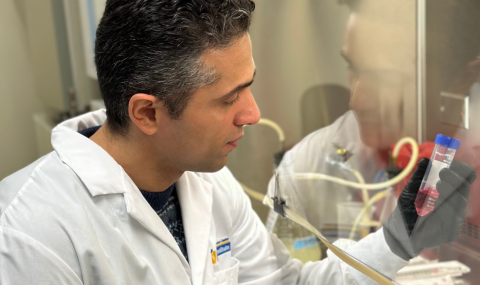Suspicion
- Your doctor may become suspicious of an esophageal or gastric concern based on symptoms (i.e. coughing up blood, repeated trouble swallowing, weight loss), and may send you for an upper endoscopy to investigate the cause of the symptoms.
- Suspicion may also result from an emergency department visit, where they may send you for a CT scan to investigate the cause of symptoms.
Consult with a (GI) Specialist
- Doctor will assess the CT imaging/ upper scope procedure information.
- If the doctor suspects esophageal/ gastric cancer there will be a referral to the OPNP program for a work up with additional testing.
Testing
Some possible tests you may receive:
PET Scan
- A PET scan creates a 3-dimensional computerized picture of the body using an injected sugar solution.
- This test scans the “eyes to the thighs” to look for cells replicating quicker.
CT scan
- A Computed Tomography (CT scan) is a diagnostic imaging procedure that uses a combination of X-Rays and computer technology to produce images of the inside of the body.
- Looks to see if there are any additional areas of concern.
Biopsy/Upper Scope
- The specialist may remove a tissue sample from the abnormal area.
- An endoscopy, CT or an ultrasound may be used to look at other abnormal areas.
MRI
- Radio waves and a powerful magnet linked to a computer are used to create detailed pictures of areas inside the body.
- Screens for other areas of potential concern.
- If MRI is unavailable, then a CT scan will be completed in its place.



